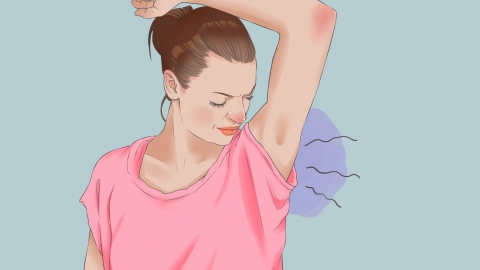How to Treat Body Odor
Bromhidrosis usually refers to axillary osmidrosis. Generally, axillary osmidrosis may be caused by excessive secretion of underarm sweat glands, untimely cleaning, bacterial infection in the underarm area, hyperhidrosis, endocrine disorders, and other factors. It is recommended to seek timely medical consultation, identify the underlying cause, and improve the condition under a physician's guidance through general treatments, medications, etc. A detailed explanation is as follows:

1. Excessive sweat gland secretion: Apocrine sweat glands are densely distributed in the armpits. During puberty or after exercise, increased sweat secretion can lead to odor when the sweat is broken down by bacteria. It is advisable to wear loose, breathable cotton clothing to reduce underarm heat and humidity. Take a shower promptly after exercising, focusing on cleaning the underarm area and keeping it dry to minimize sweat accumulation.
2. Delayed cleaning: Long-term neglect of underarm hygiene can lead to accumulation of sweat and sebum, causing excessive bacterial growth and worsening the odor. Clean the underarm area daily with warm water, using a mild shower gel if desired, and dry thoroughly with a towel after washing.
3. Underarm bacterial infection: Imbalance of skin flora in the underarm area allows for excessive proliferation of bacteria such as Staphylococcus aureus, which break down sweat and produce a foul odor. Patients should follow medical advice to apply medications such as aluminum chloride solution, formaldehyde solution, or hexamethylenetetramine solution to the underarm area to inhibit bacterial growth and reduce odor production.
4. Hyperhidrosis: Dysfunction of the sympathetic nervous system causes underarm sweat production far exceeding normal needs, and the persistently moist environment intensifies the odor. In addition to regular hygiene practices, patients may use medications such as tolterodine tartrate tablets, oxybutynin tablets, or solifenacin succinate tablets under medical supervision to regulate nerve function and reduce sweating.
5. Endocrine disorders: Conditions such as hyperthyroidism and hormonal changes during menopause can cause endocrine imbalance, stimulating abnormal sweat gland secretion and triggering or worsening axillary osmidrosis. Treatment should primarily target the underlying disease—for example, patients with hyperthyroidism should follow medical advice to take medications such as methimazole tablets, propylthiouracil tablets, or carbimazole tablets to regulate thyroid function.
In daily life, avoid consuming strongly odored foods such as garlic, onions, and leeks to reduce odor sources. Regular follow-up visits during treatment are necessary to adjust the treatment plan according to recovery progress and maintain underarm skin health.




